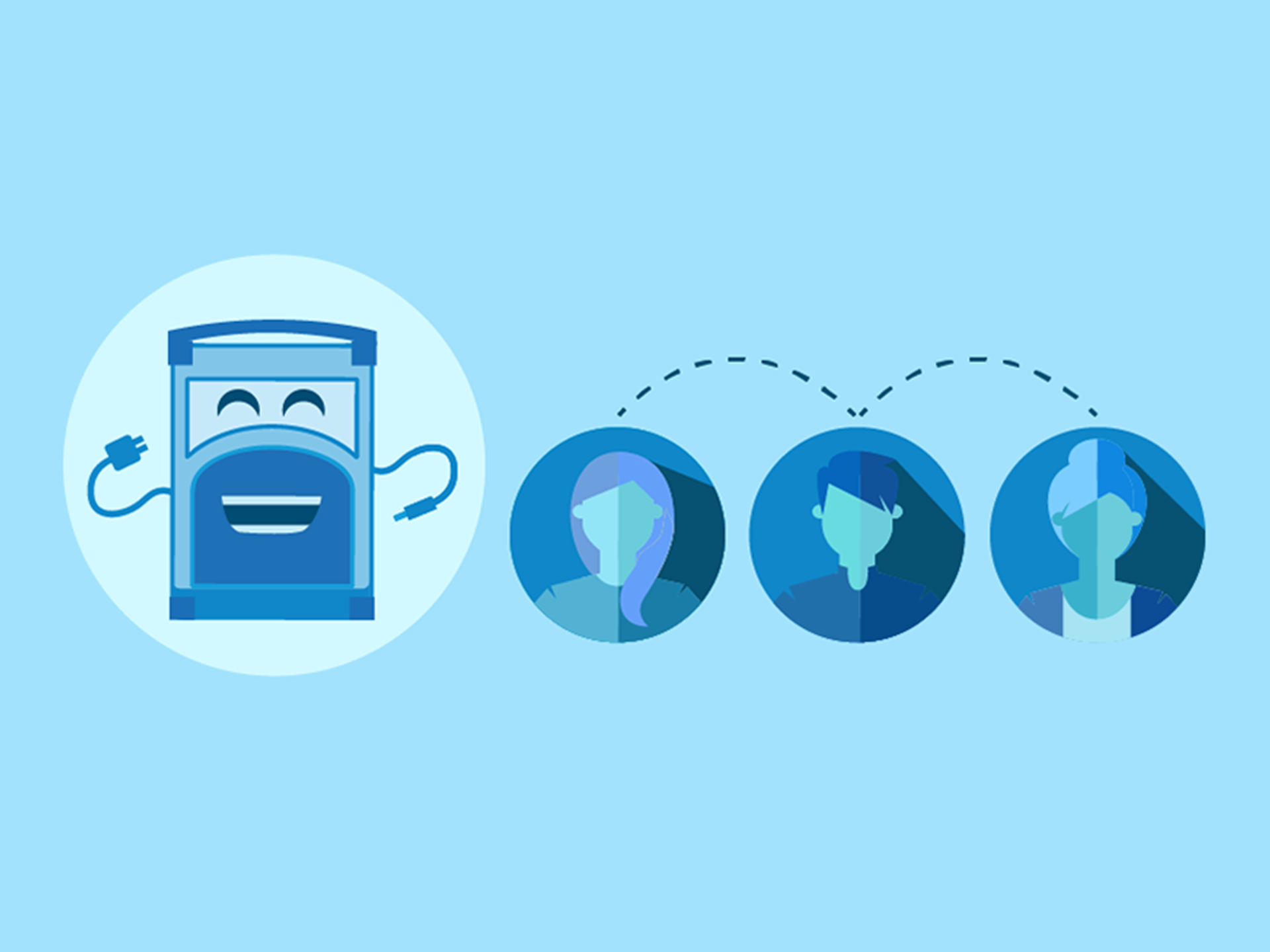
The idea of word-of-mouth marketing is nothing new. It's at work everywhere, but you don't always notice it.
It might include hitting up your tech buddy to get advice on the best new computer. Or grabbing a pair of shoes because of a social media superstar. Or heading to a particular Osteopath because your family—who also suffer with various musculoskeletal ailments—recommended them.
We’ve all gone out and bought something after a referral.
At the end of the day, generating referrals is a main driver behind things like influencers and the popularity contest that is “Social Media Marketing”. So, it’s interesting it’s always been so tough for businesses to do well.
The difficulty has always come from how you measure something like referrals. How do you make them a trackable, manageable, and a valuable part of your marketing strategy? How do you make sure the time and energy you’re putting into yet another marketing tactic isn’t another black hole?
SaaS referral marketing platform Referral Rock is setting out to change this. How? By creating a scalable mechanism that slots in with your existing marketing channels.
I had the opportunity to sit down with Mica Longanecker, Head of Sales and Customer Success, and CEO Joshua Ho. We talked all things referral marketing, culture, and putting people first.
Making Referral Marketing Valuable
I hadn’t heard or seen much about the professional concept of referral marketing. That was until chatting with Mica and Josh.
“We like to think of it as an additional channel to the other kind of marketing channels that a typical digital marketer/ growth marketer would use” says Mica. “We kind of think about referral marketing as a way of empowering and scaling word of mouth".
“So, our customers have these raving fans, these raving customers that are talking about their product. Referral Rock, and referral marketing is a mechanism to empower those customers”.
So it's about turning word-of-mouth into a trackable, valuable, viable marketing channel. Instead of something vague and ambiguous. This helps Referral Rock’s customers veer away from hoping someone’s sharing their software with somebody else.
“Exactly,” says Mica. “A big piece of that is building it out as its own channel that can run and automate on its own. As well as incorporating it into those existing marketing channels that marketers are using".
Solving the problem isn't only about the referral software itself. It's how it fits in with what companies already have. It's like building around an old barn, rather than from scratch.
“How do we incorporate an easy tool, which Referral Rock provides, to allow those marketers and their customers that they talk to, to share and promote the company without taking advantage of the marketing context?" ponders Mica.
“So for example, a marketer could be sending email newsletters. There’s an email newsletter that mentions the referral program, but for the most part those marketers are going to be telling a story. They’re gonna have different types of content that they’re gonna wanna produce" says Mica.
The challenge is making it easy for marketers to include referrals inside email.
"A great way to integrate with that existing channel would be in the footer somewhere in the email, having a link to the referral program so those recipients can join and share" says Mica. “A large part of how you build on scale referral programs is identifying where in that existing customer journey, those different customer touch points, can you seamlessly embed a referral program".
Being creative and strategic with how and where you ask can wield good results.
“We like to talk about that as passive versus active asks" explains Mica. "An active ask is where a customer is super happy, when can you proactively reach out and ask them to join the referral program".
"A passive ask where it’s like maybe there’s a place in the email marketing or if it’s a SaaS company within the website or within the application itself". “Identifying those opportunities where the user is naturally engaged, and seeing how you can incorporate the referral program in a more seamless way that doesn’t take it out of context and be the core focus. They’re already interacting in the way they want to interact” says Mica.
People First Powers the Customer Experience
As I talk with Mica and Josh, it’s clear there are strong shared values between them. This isn’t a bland list of cliché buzzwords. There’s thought, meaning, and a continual reinforcement of their shared values. It creeps into every facet of the business.
The first, and the one I find myself most enamored with is their people-first mentality. “Everything we’ve done with customers has been consultative from the start” explains Josh. “That’s how we grew”.
“When we were a little smaller and not up to par with competitors, the first thing I was doing was being on chat all the time and talking to people. That made me realize the sales cycles were totally different than I thought".
“The original idea was that people would go ahead and use the software, and tinker around, decide to upgrade or not" Josh recounts. "What happened was I started getting annoyed trying to answer all these questions over chat, where I was like 'Let’s just get on a phone call' and they were like 'ok cool'".
It was after doing calls that things started to change. “Once I actually heard people’s voices the way they talked about certain things it was like 'oh, ok'".
"It’s not just 'how do I do this' it’s actually 'I WANT to do this'". explains Josh. "I’m like 'Oh, we’re going about this all wrong we need to do this. Oh, you’re looking for that type of thing, why do you need that?'. So it kind of started the tip in, in terms of customer development".
“But that was always the mentally of 'what are we gonna do to help the people first?'. So with that, it turned into inside sales—before I knew what it was called".
And it turned out this inside sales thing was a good call. “I was selling to people and was like 'huh, I talk to people and they buy'".
"They buy a lot faster than even just chat or other things. [We] figured out what it was worth to them in terms of value proposition and how they were using the software".
“We […] talked to a water filtration company and they were talking about 'oh yeah, if I get a new customer out of this we’re gonna make $10k off this' or something like that and I was like 'oh, ok'".
“Within the next call some of the features they were asking for, I’d put up a new pricing page and they’re like 'oh yeah I saw that you have all these features we talked about, or you’re wanting to do that'".
Customer development on the fly meant Josh could create the feature they needed the most. And charge for it.
“It went from $50 a month for a certain plan we had—I mean we grandfathered everyone in anyone that was on the other plan was still fine—but I was just like “here’s this premium one that has all the features you’re requesting that we’re gonna build, but that’s what it’s gonna cost” and they were perfectly fine".
"I was like 'Oh wow! This is like 4 sales in 1'. So this is what inside sales is!”.
This approach is something we share. I understand Josh’s passion for putting the customer and their experience above all else.
As we chat I touch on our recent struggles parting ways with a customer because of cultural differences. The Referral Rock team can relate.
“It’s hard to grapple with cause on the customer success side, you know, you want everyone to be successful, you want everyone to do well with your product.” says Mica. “That’s kind of why you build it. So it’s difficult to see people churn because they weren’t having success with the product".
“It’s been something that’s been hard to swallow, but it’s been very helpful to understand who those customers are that are going to do well, so that we can make sure we’re effectively investing the time, the resources. Building the product for them, building the marketing for them".
“I think you guys actually do this well too.” Josh remarks. “That was even what first drew me to using HelpDocs was right away I was asking questions and Jake was over there, just fielding answers all the time". “From a people first mentality we’ve always taken that. Regardless if the product was behind. It was always about: what can we do to service people better".
Making the customer experience great is important to the team, even at the very start.
“Even for someone trying to get a demo, it’s always important to me they don’t just get ghosted. Like, the most annoying part for me when I’m out there getting quotes or demos on software is when you put in a demo request and it goes in, and get a 'thank you for that' and then you never hear anything".
“I never wanted any one of our customers to have that experience". explains Josh. "Even if they’re not the right fit or whatever, at least at the worst it would be 'sorry we don’t think you’d be the right fit, but take a look at this video and let us know if you think different'”.
“You can still have a good experience, even if you’re not the right fit”.
Experience is The Future of Sales and Success
As the end of our conversation draws near, I’m keen to get some insights from the two on the future of Sales and Success. After all, Referral Rock is a platform that straddles the two areas.
It relies on positive outcomes both for their customers—and their customers—to be successful.
“Customer experience is massive” says Josh. “It’s been great for us because even when there were times when the product has been behind, you could always hang your hat on 'well, you know what, we gave top notch service, and people are happy'”.
And great customer service is top dog at Referral Rock. “Sometimes, for different reasons, a product doesn’t work out or whatever and that’s ok but, was there more we could’ve done from a personal level?". "As long as you’re checking a lot of those things off, you’re providing a really good customer experience and I feel like that gets lost".
“It’s kinda coming full circle now with SaaS, people talk about actual departments for customer success and all of this. None of this is necessarily new, industries have been doing this forever it was just previously called Client Management".
“But now the term is coined as customer success, I feel like a lot of the startups and things like that, you’re hearing the narratives of going more toward the product-based, product-led growth and all the product stuff. The product stuff is great, but at the same time, there’s a lot more on the service end and on the whole customer experience end".
“It’s an area where not as many people pay attention to early on, it’s all growth, growth, growth, leads, leads, leads, that type of thing". "Even our small things of treating the leads, and giving a good experience with that, I feel like those make a bigger difference in the long run".
For Mica, Josh, and the rest of the Referral Rock team, a good experience has been the foundation of their company. “When you have a certain company or certain people who are doing things a certain way, and you’re not doing those early on, you can’t just bake them in later". "It just starts to be what you’re presenting as the experience of your company".
“I think it’s an important part that not enough people are paying attention to, or when they start to it might be too difficult to do".
